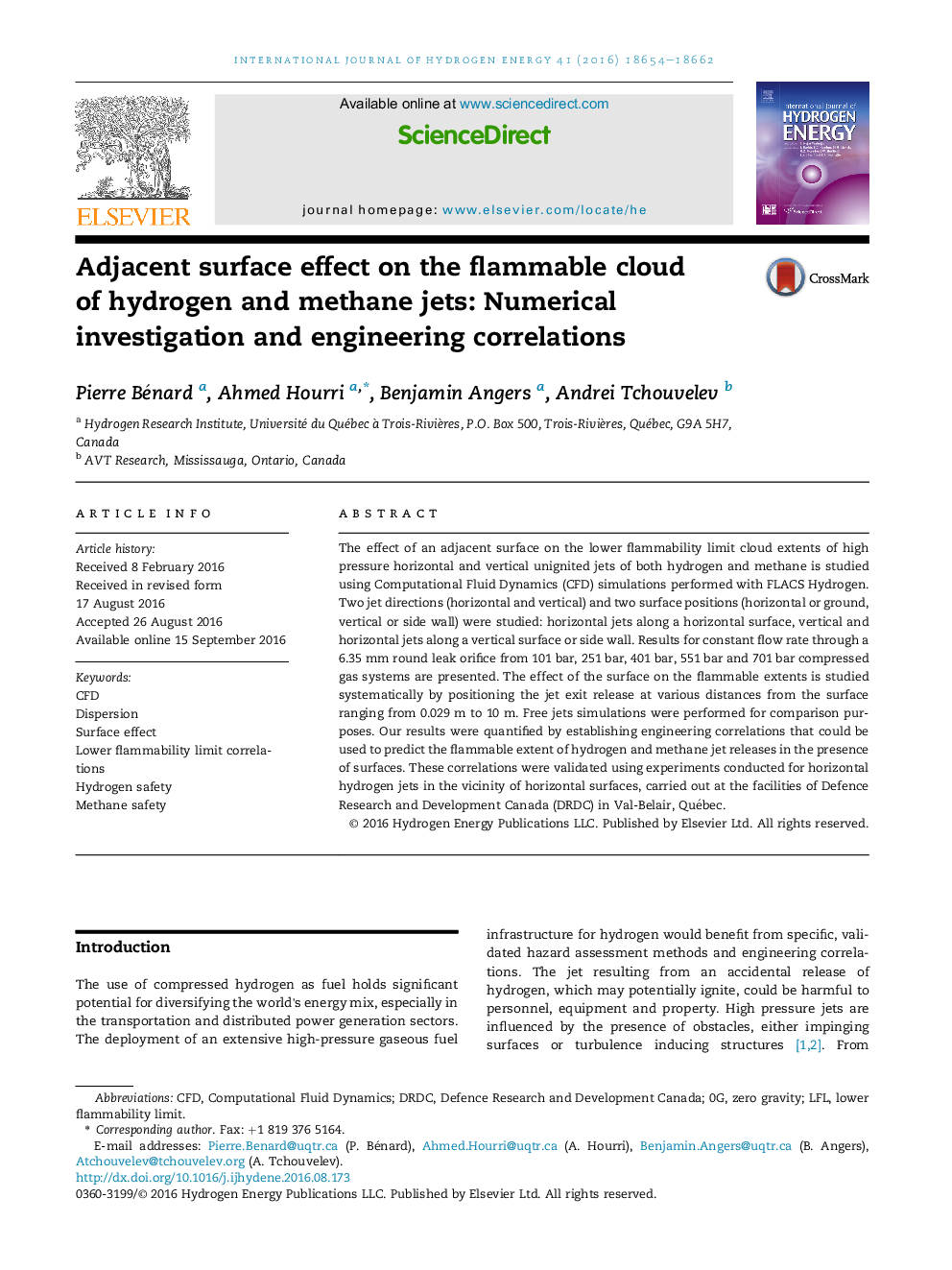| Article ID | Journal | Published Year | Pages | File Type |
|---|---|---|---|---|
| 5147414 | International Journal of Hydrogen Energy | 2016 | 9 Pages |
Abstract
The effect of an adjacent surface on the lower flammability limit cloud extents of high pressure horizontal and vertical unignited jets of both hydrogen and methane is studied using Computational Fluid Dynamics (CFD) simulations performed with FLACS Hydrogen. Two jet directions (horizontal and vertical) and two surface positions (horizontal or ground, vertical or side wall) were studied: horizontal jets along a horizontal surface, vertical and horizontal jets along a vertical surface or side wall. Results for constant flow rate through a 6.35Â mm round leak orifice from 101Â bar, 251Â bar, 401Â bar, 551Â bar and 701Â bar compressed gas systems are presented. The effect of the surface on the flammable extents is studied systematically by positioning the jet exit release at various distances from the surface ranging from 0.029Â m to 10Â m. Free jets simulations were performed for comparison purposes. Our results were quantified by establishing engineering correlations that could be used to predict the flammable extent of hydrogen and methane jet releases in the presence of surfaces. These correlations were validated using experiments conducted for horizontal hydrogen jets in the vicinity of horizontal surfaces, carried out at the facilities of Defence Research and Development Canada (DRDC) in Val-Belair, Québec.
Keywords
Related Topics
Physical Sciences and Engineering
Chemistry
Electrochemistry
Authors
Pierre Bénard, Ahmed Hourri, Benjamin Angers, Andrei Tchouvelev,
